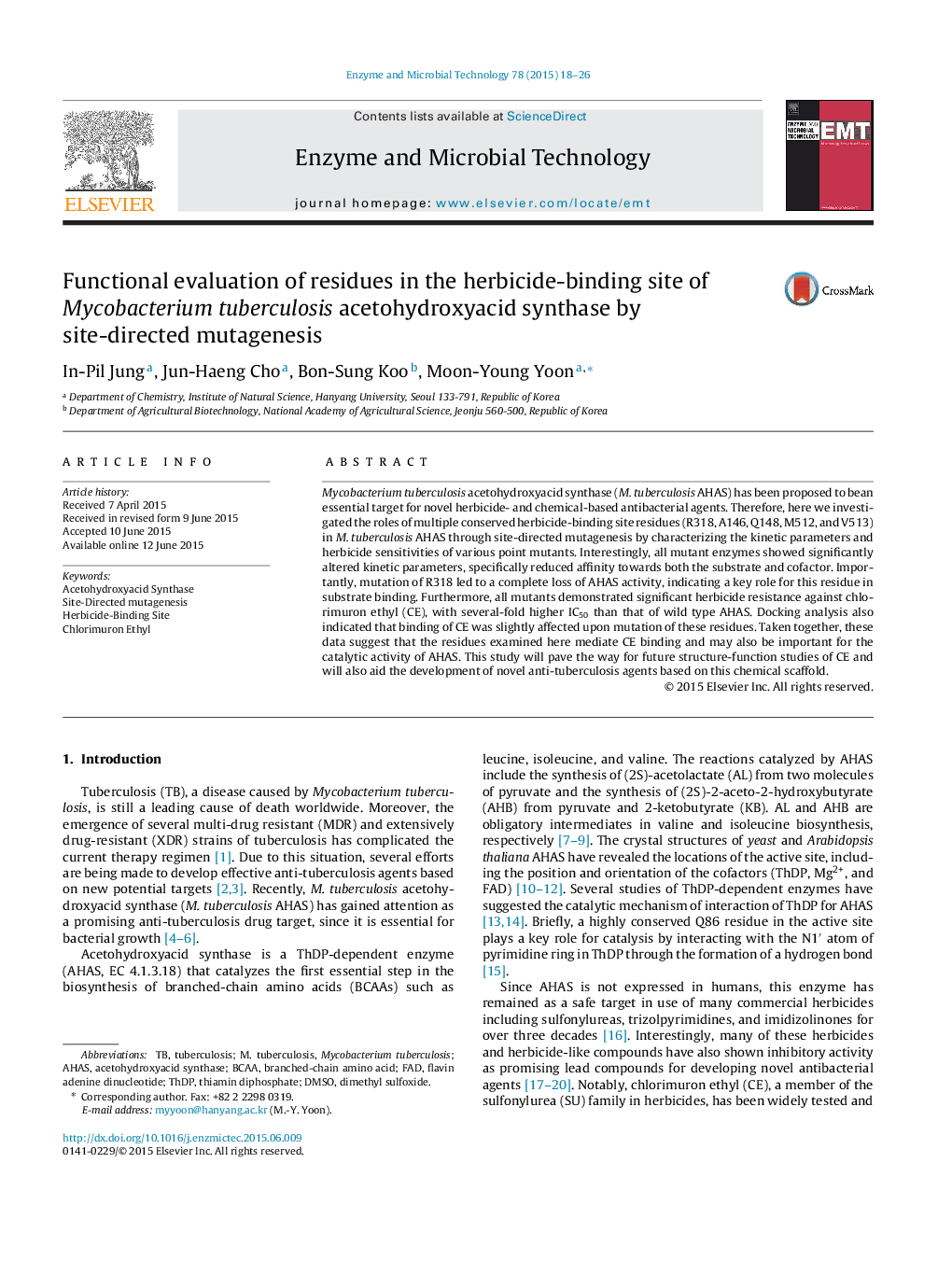| Article ID | Journal | Published Year | Pages | File Type |
|---|---|---|---|---|
| 16844 | Enzyme and Microbial Technology | 2015 | 9 Pages |
•Role of critical residues in acetohydroxyacid synthase (AHAS) was evaluated.•These conserved residues are located in the herbicide binding site of AHAS.•Kinetic result of the variants suggested that R318 play a key role in catalytic activity.•A146 and Q148 might be involved in herbicide binding of AHAS.•M512 and V513 constitute part of the herbicide-binding site.
Mycobacterium tuberculosis acetohydroxyacid synthase (M. tuberculosis AHAS) has been proposed to bean essential target for novel herbicide- and chemical-based antibacterial agents. Therefore, here we investigated the roles of multiple conserved herbicide-binding site residues (R318, A146, Q148, M512, and V513) in M. tuberculosis AHAS through site-directed mutagenesis by characterizing the kinetic parameters and herbicide sensitivities of various point mutants. Interestingly, all mutant enzymes showed significantly altered kinetic parameters, specifically reduced affinity towards both the substrate and cofactor. Importantly, mutation of R318 led to a complete loss of AHAS activity, indicating a key role for this residue in substrate binding. Furthermore, all mutants demonstrated significant herbicide resistance against chlorimuron ethyl (CE), with several-fold higher IC50 than that of wild type AHAS. Docking analysis also indicated that binding of CE was slightly affected upon mutation of these residues. Taken together, these data suggest that the residues examined here mediate CE binding and may also be important for the catalytic activity of AHAS. This study will pave the way for future structure-function studies of CE and will also aid the development of novel anti-tuberculosis agents based on this chemical scaffold.
